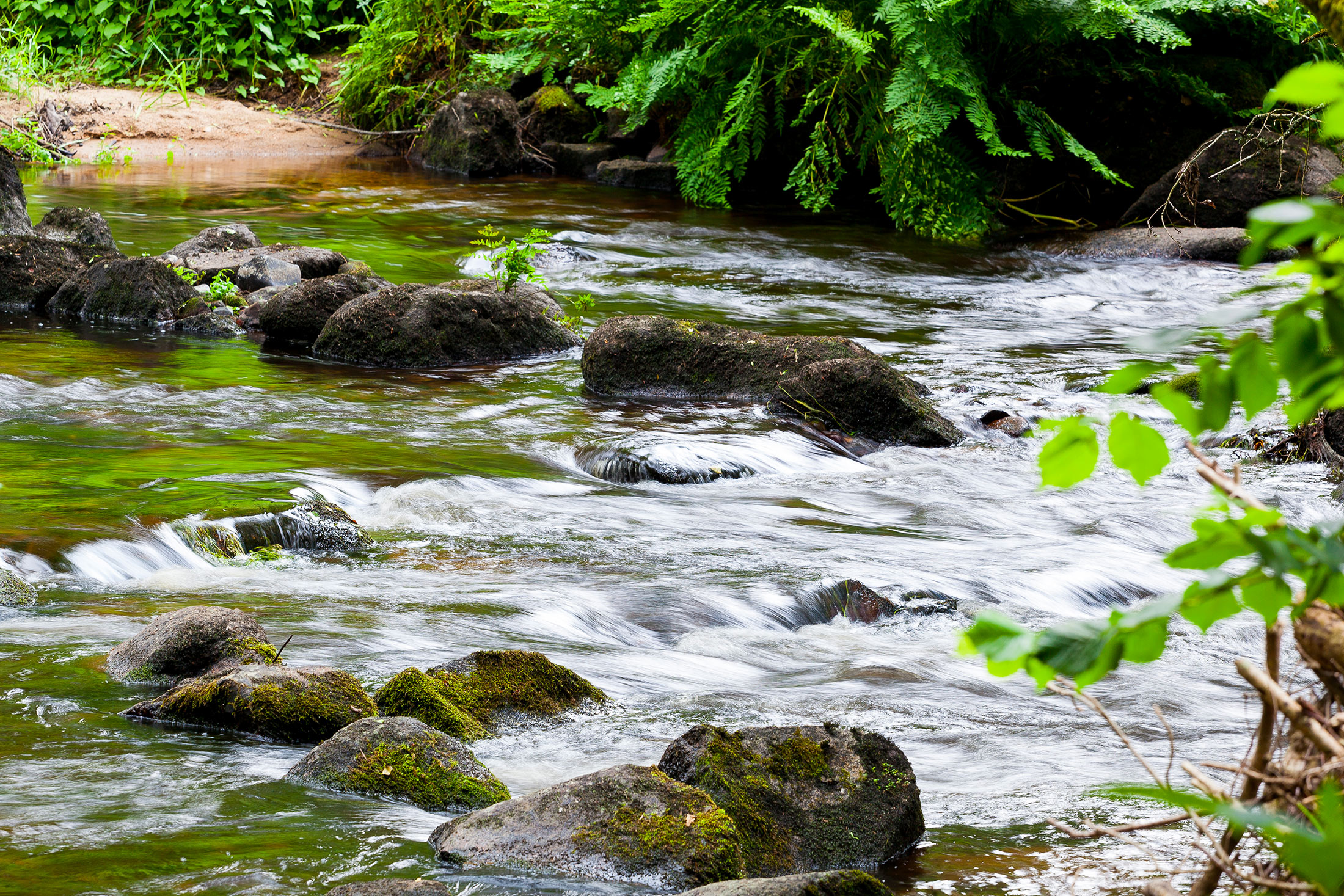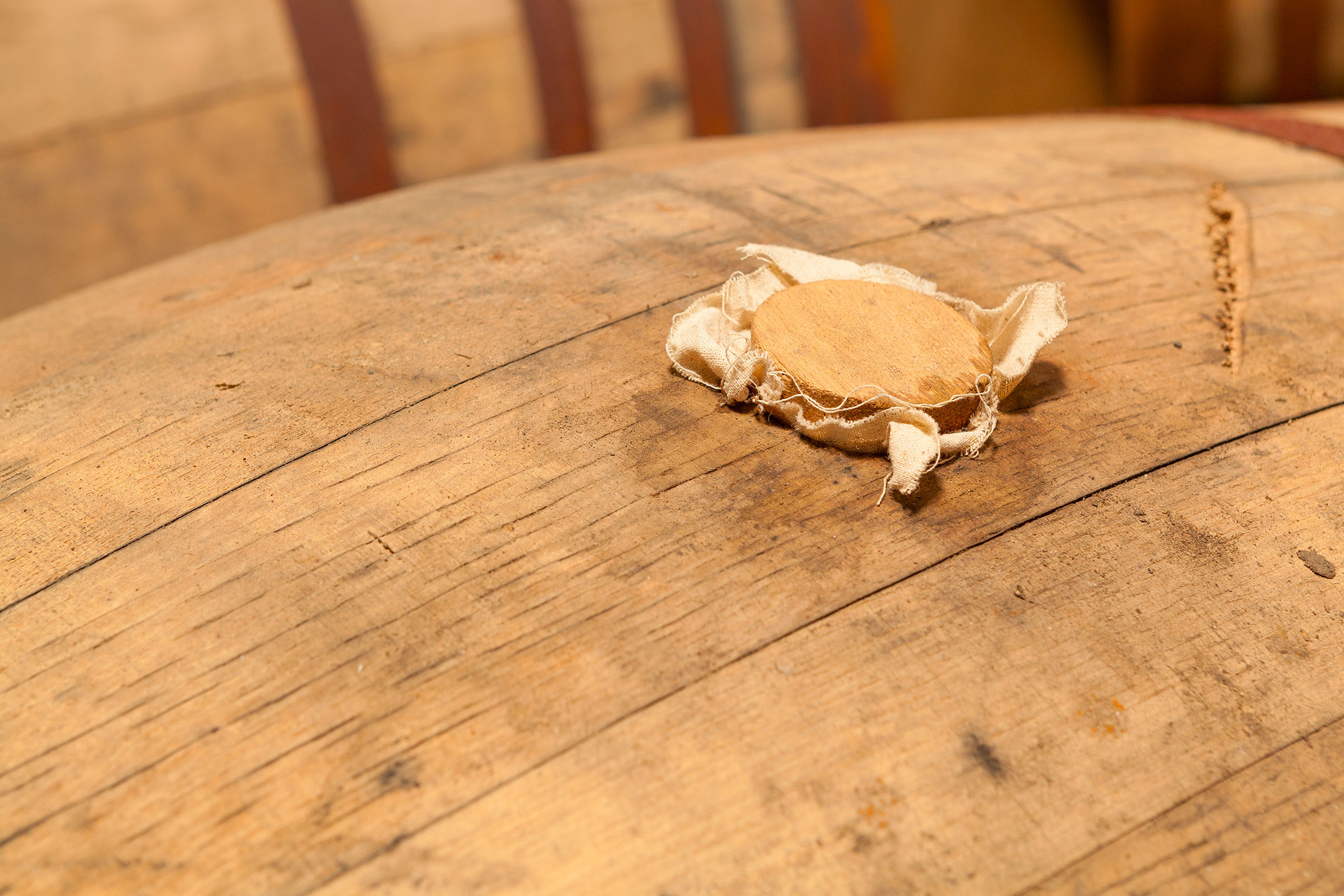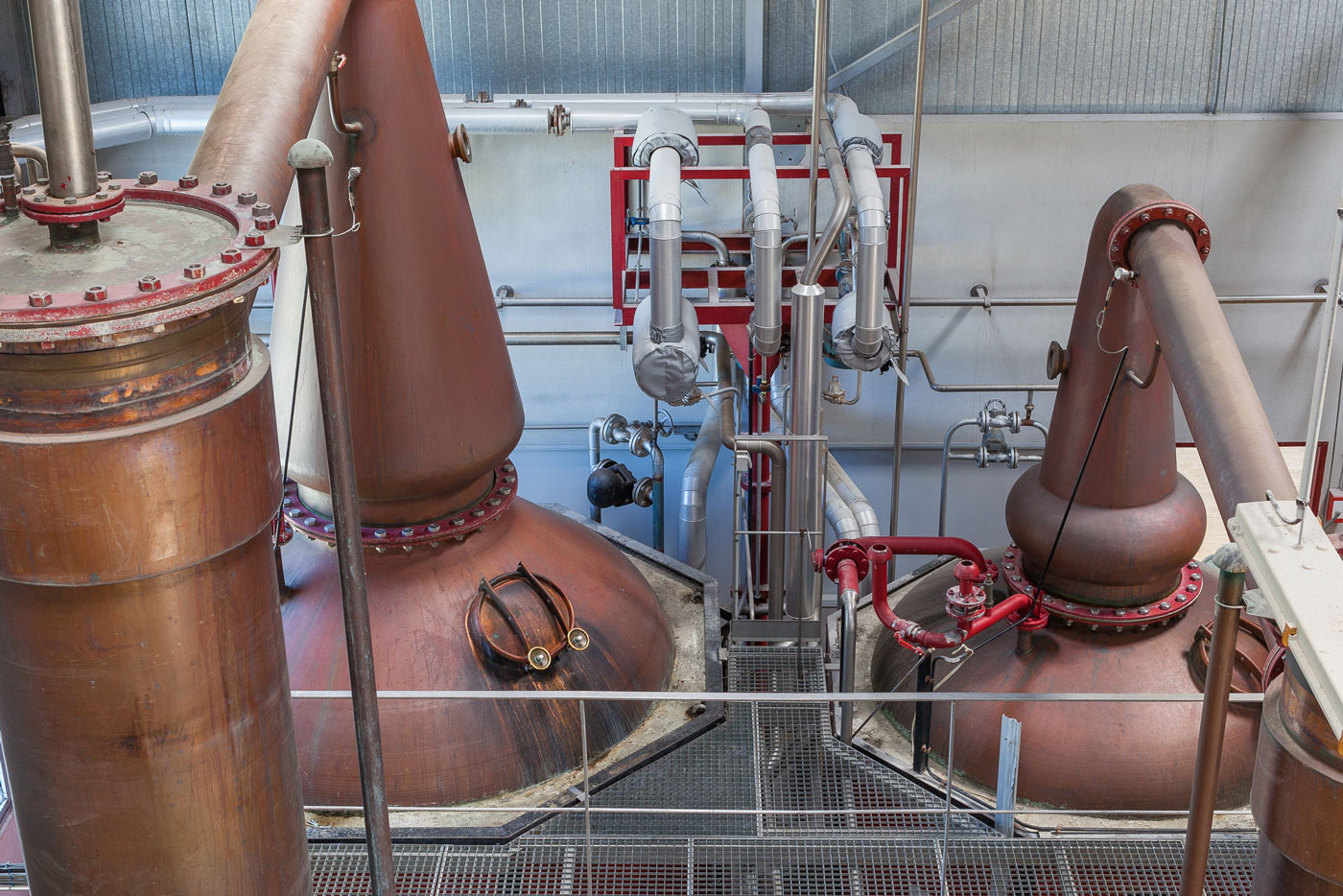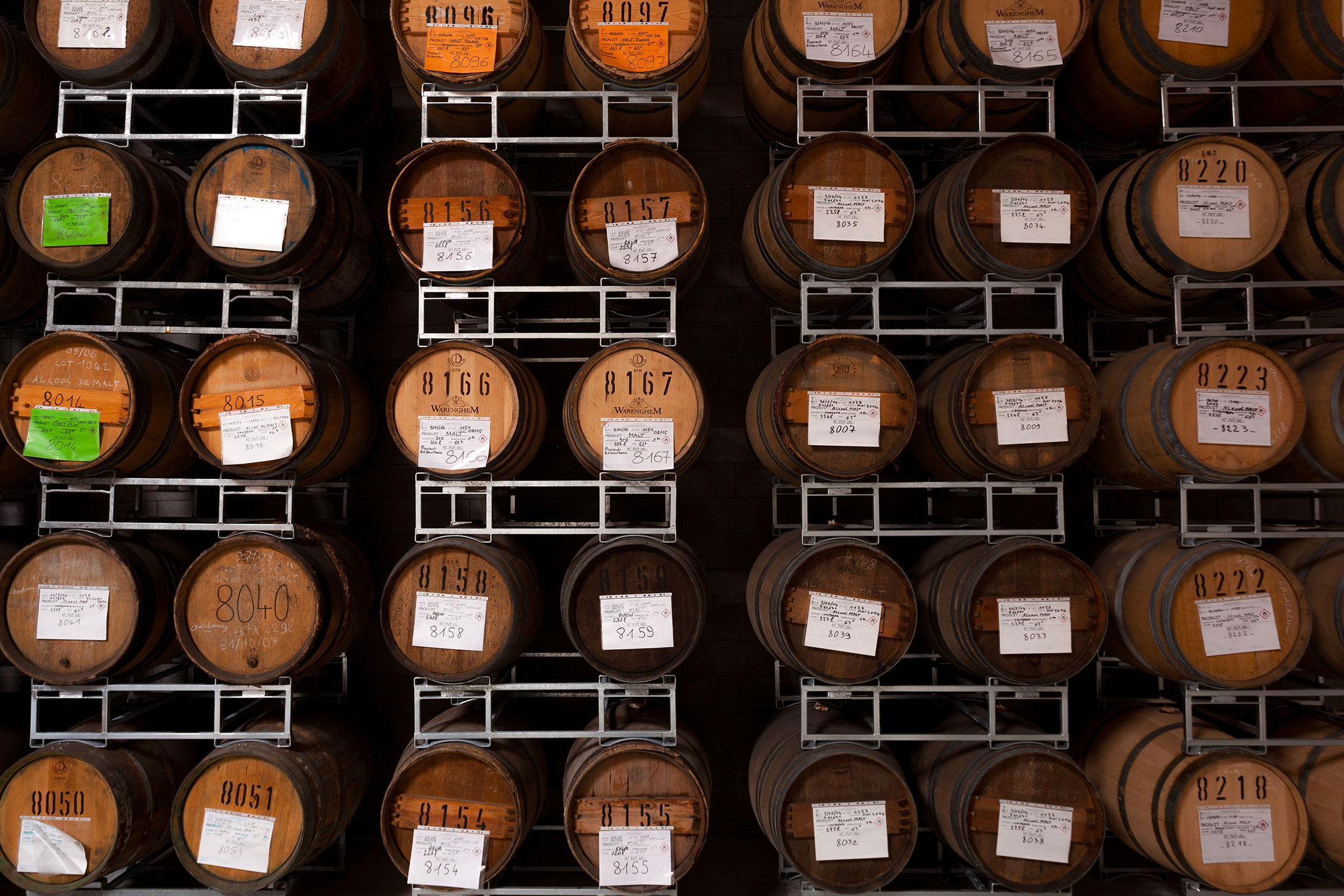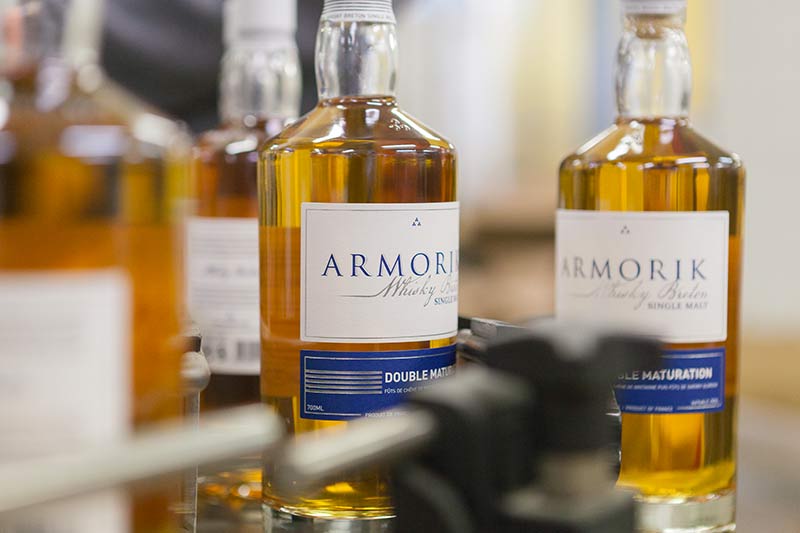Ageing
An initial reduction with water brings the distillate to 63% alcohol and it is transferred to oak casks for ageing. We use a number of different types of cask:
– Former bourbon whisky casks, which provide mellowness while maintaining the fruitiness of our distillate;
– Former oloroso sherry casks from Spain, which provide a warm and spicy fruitiness;
– Oak casks from Brittany: thanks to a 15-year partnership with the last cooper in Brittany, namely Jean Baptiste Le Floc’h from Douarnenez, we have casks made from oak sourced from the forests of Cranou and Brocéliande. These casks provide their natural sweetness and delicate woody notes.
Throughout the ageing process, gaseous exchanges occur through the oak. So each climate and each region provides the whisky with a distinct flavour.
Our casks age in the unique maritime climate of Brittany’s northern coast: temperatures are mild all year round (clement winters, fresh summers) and the sky can alternate over several hours between rainy periods and brilliant sunshine. In this mild climate, the angels’ share, namely the fraction that evaporates each year, accounts for about 3% in our cellars.






